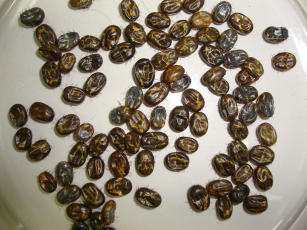Biological control of the cattle tick through entomopathogenic nematodes by cadaver insect technique
Biological control of the cattle tick through entomopathogenic nematodes by cadaver insect technique

Photo: Márcia Prata
Improper handling for tick control favors the proliferation of resistant populations. In addition, there is a growing demand for minimum use of chemicals to control pests, in order to preserve the environment and ensure free waste food. In this context, biological control using entomopathogenic nematodes may represent a promising alternative and, therefore, constitute line of research that has been conducted at Embrapa Dairy Cattle. In this stage of the survey, performed in partnership with UFRRJ (Rural Federal University of Rio de Janeiro), UFJF (Federal University of Juiz de Fora) and UENF (State University of North Fluminense), aimed to assess the biological control efficiency on the free life stage of the cattle tick. For this, female ticks ready to oviposition were exposed to different species of nematodes. The results, based on the determination of the most effective nematode species and concentrations for tick control, can support biological control programs tick in field application, providing combined efficiency to reduce health risks for animals and consumers of derivative products and lower environmental impact. Once that are lost annually over three billion dollars in Brazil due to parasitism by the cattle tick and a significant portion of such losses related to the dairy cattle, it is expected contribute to strengthening the milk production chain, with positive repercussions for the whole society.
Ecosystem: Atlantic Forest
Status: Completed Start date: Fri Apr 01 00:00:00 GMT-03:00 2011 Conclusion date: Mon Mar 31 00:00:00 GMT-03:00 2014
Head Unit: Embrapa Dairy Cattle
Project leader: Marcia Cristina de Azevedo Prata
Contact: marcia.prata@embrapa.br
Keywords: Boophilus, Heterorhabditidae, Steinernematidae
